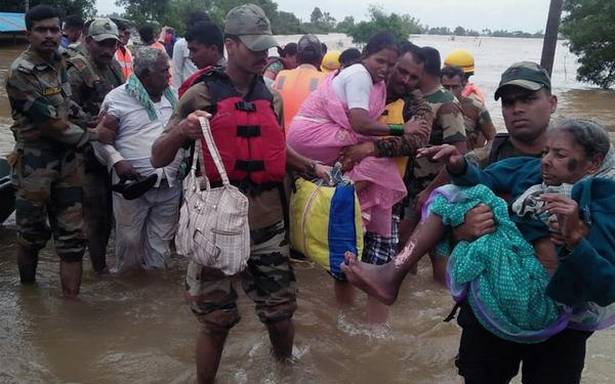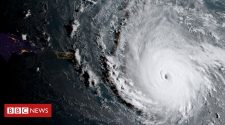Use of modern technology, weather alerts, inter-State coordination, and advance preparation helped officials battle the floods better this time around.
One result is the reduced number of deaths. In the 2009 floods, the toll was 294 and now it’s close to 90.
Two factors accentuated the floods: north Karnataka received the highest rainfall in 118 years and there was unprecedented release of water from Maharashtra.
Through there has been widespread devastation, the scale of damage was low. The State government earned praise from Sri Prakash, Central flood assessment team leader, who congratulated the officials on their effective flood management in Belagavi.
Officials say concerted efforts by various agencies led to efficient evacuation of vulnerable villages and timely search and rescue efforts. “This was achieved by the joint efforts of various teams at various levels,” said Revenue Secretary T.K. Anil Kumar.
Top officials of the Revenue, Disaster Management and Irrigation Departments of Maharashtra, Karnataka, Telangana, and Andhra Pradesh were in constant touch with each other.
Intelligent management of dams and canals using past data and factors like soil condition and the crop conditions in the command area was another task.
“Once we were alerted on water release, we asked the Deputy Commissioners to take over the dams and monitor release based on inflow. The outflow was managed looking into factors like the impoundable quantum of water, strength of the dam, and the conditions in the catchment area,” Mr. Anil Kumar said.
“Bagalkot, Raichur and Uttara Kannada can be case studies for effective management of reservoirs. Almatti was the key reservoir. Its gates were opened to flush out all the additional inflow in the initial days. Dam management was critical at Kadra in Karwar as the Kaiga station is on its right side,” he said.
The Central forces were working with the State relief agenciesand revenue officials. The presence of the Army and the Air Force bases in Belagavi and the Naval base in Karwar helped reduce response time.
Actually preparations began four days before the water release. This was aided by the early warnings by the India Meteorological Department and data by the State Disaster Management Authority.
There was nearly a 100% evacuation in Belagavi, Bagalkot, Raichur, and Koppal. Nearly 2.5 lakh persons were housed in relief centres and animal shelters were set up overnight.
“Relief camps are still functioning in villages that are still inundated, or are inaccessible or in badly affected villages,” Belagavi Zilla Panchayat CEO K.V. Rajendra said.
Belagavi Deputy Commissioner S.B. Bommanahalli credits the Central forces for the effective rescue efforts.
“The Maratha Light Infantry Regiment and the Air Force base in Sambra in Belagavi helped officials tremendously. Nearly 900 MLIRC soldiers and officers had reached affected villages either one day before the floods or on the day the villages got flooded. Four helicopters were pressed into service immediately. The helicopter units were always on duty and reached any affected area within an hour. They rescued, on an average, 1,000 people per day. We are grateful to them for their service,” he added.















